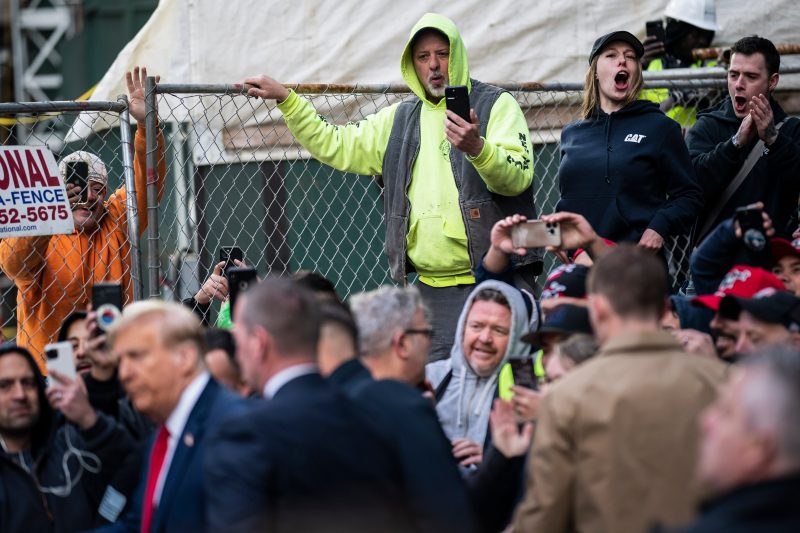
Trump’s Dilemma: Union Members’ Support at Stake Amid Complexities
Throughout his tenure and even during his presidential campaign, Donald Trump has shown a distinct affinity for America’s labor unions, often portraying himself as a champion of the workforce. This might seem somewhat paradoxical, given his administration’s controversial labor-related policies and public sentiments. However, any successful outreach to union members could prove a major boon for Trump, offering a substantial number of potential voters. Yet, the president’s actions and policies often overlook this advantage, complicating his possible gain.
One of the most involved and perhaps most complex issues in this context is the constant oscillation of Trump’s stance concerning labor unions and their members. On the one hand, Trump has always expressed a strong appreciation for the “great American worker,” referring to them as the backbone of the American economy. His charm offensive towards the working classes has been evident during on-site visits, during speeches, and on his social media feeds. Even his trade policies seem tailored to support jobs in manufacturing, an industry with a traditionally high union membership.
On the other hand, the Trump administration has also backed multiple policies and taken actions that appear irrefutably detrimental to union rights and protections. For instance, his administration has supported “right-to-work” laws, which serves to weaken unions by allowing employees at unionized workplaces to opt-out of paying union dues. This fundamentally undermines the financial strength of these organizations and threatens their ability to protect their member’s rights, notably contradicting Trump’s self-portrayed image of union protector.
Moreover, a number of Trump’s appointees to key roles related to labor issues have been openly anti-union. The National Labor Relations Board under Trump sought to rewrite rules to give more power to employers over their personnel, a measure seen as a direct threat to the union movement. These actions have not gone unnoticed by the unions, spurring criticism and controversy and making Trump’s courtship of union members all the more complicated.
On a broader scope, Trump’s controversial positions and the decisive rhetoric on other issues also impact his ability to attract union members. Overarching policies on immigration, healthcare, and climate policy have drawn stern opposition from numerous labor unions, which often view these matters not merely as political issues, but as an essential factor that directly affects the lives of their members.
For example, Trump’s stance on climate change and his drilling-friendly policies have alienated environmentally conscious union members. Unions in the healthcare sector have criticized Trump’s efforts to dismantle the Affordable Care Act without a clear replacement plan. Similarly, unions that represent a multicultural workforce have voiced their concerns about Trump’s immigration policies and how they could potentially affect their members – making his relationship with union members even more contradictory.
The paradoxical relationship between Trump and labor unions exemplifies the challenges inherent in political coalition building. If Trump could align his policies and actions consistently with the interests of unions and their members, he could potentially unlock a significant voting base. However, until then, he’s likely to continue facing a complicated and challenging relationship with the unions and their members.
